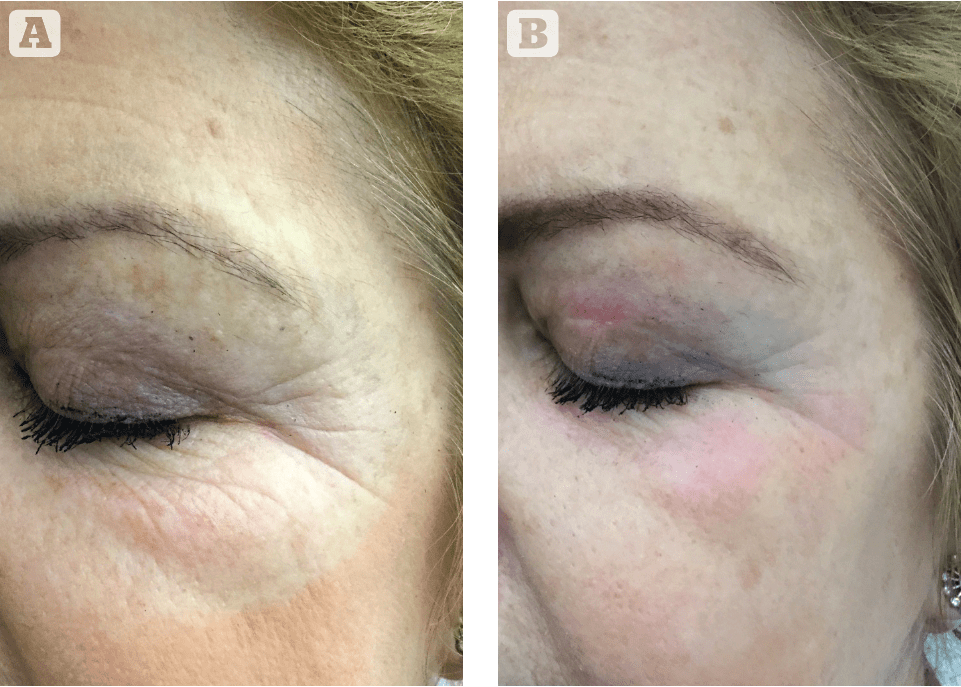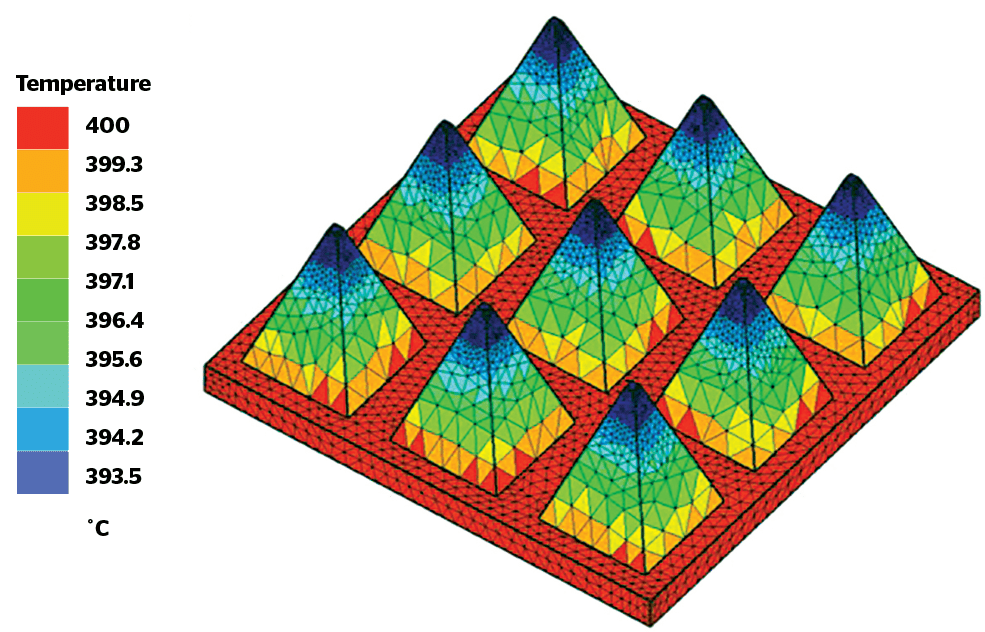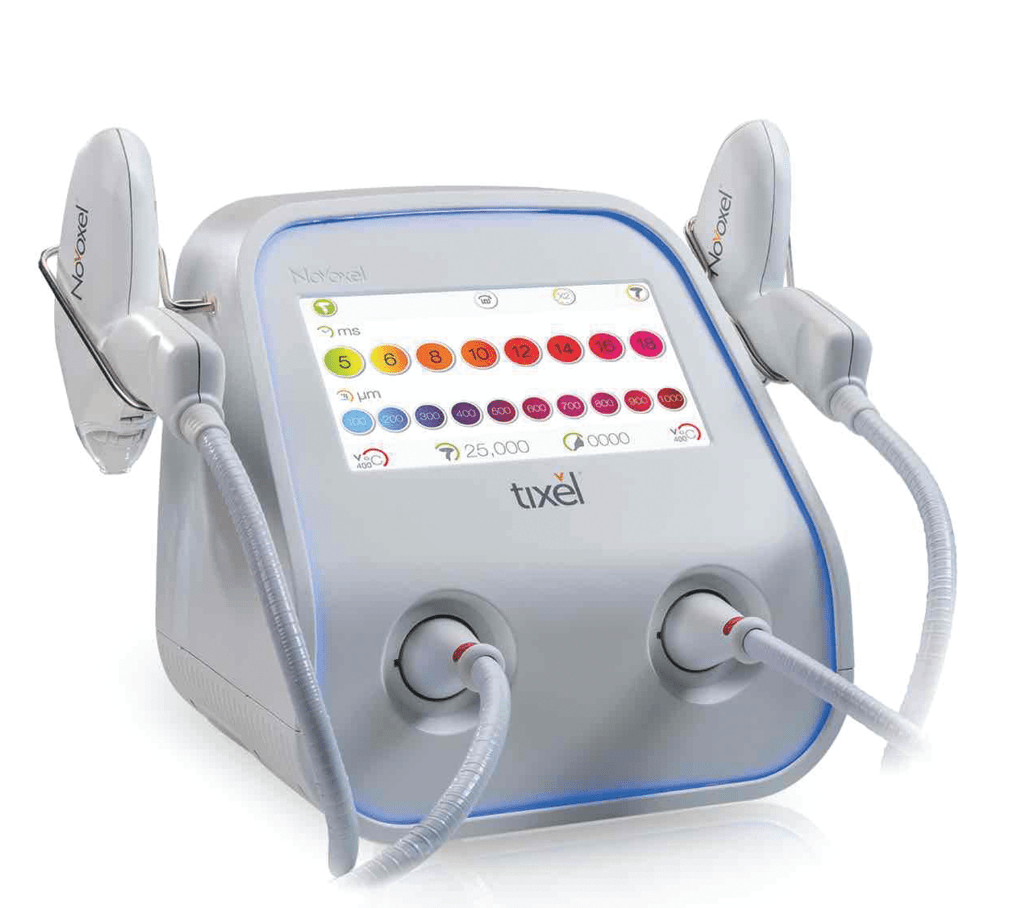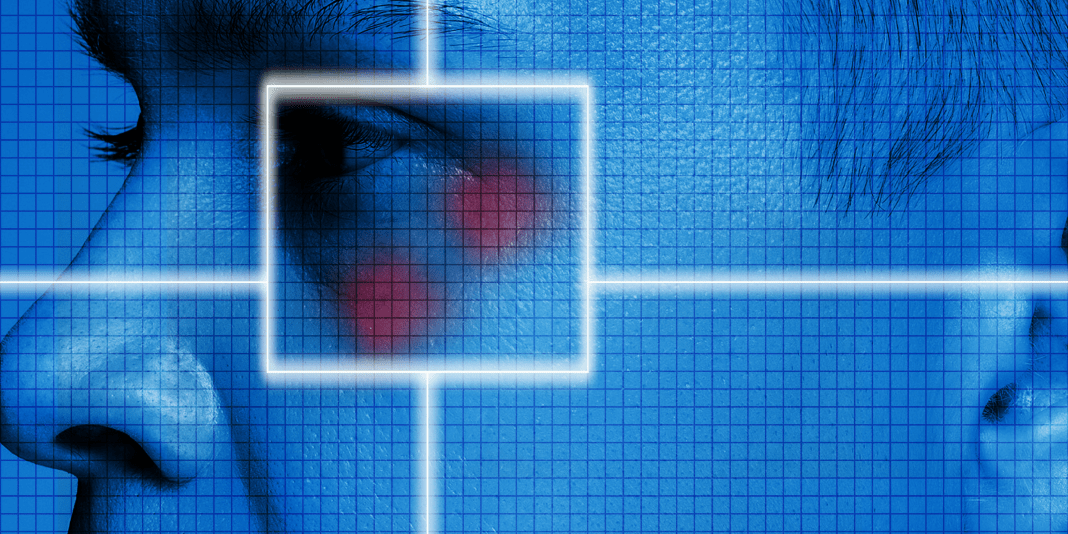Arna Shab, Manuela Lisandru, and Catharina Shab describe how thermomechanical fractional injury (TMFI) technology can be used to improve wrinkles and skin appearance in the periorbital region

Arna Shab, Manuela Lisandru, Catharina Shab; M.D, Private Practice for Dermatology and Aesthetic Medicine, Frankfurt/Main, Germany
email [email protected]
The periorbital region is the thinnest skin structure on the face and an important wrinkle-prone region as they are usually where the first signs of ageing are witnessed. Common problems such as fine lines and wrinkles, infraorbital dark circles, puffiness under the eyes, and thinning eyelashes and brows are the issues many patients complain about. Changes that occur to the periocular structures with age are categorised into dynamic and static changes. The dynamic component is related to muscular activities and changes in resting muscle tone. This static component is defined as the change related to volume loss and fat pad changes. Signs of photodamage are also prevalent, and knowledge about the contributing factors is also required. Realistic patient expectations in relation to the results are the basis of a good treatment. To this day, a large number of products such as botulinum toxin, dermal fillers, threads or various lasers are used in this area. The aim of treatment is to reduce ageing characteristics, restore the general smoothness, reduce the appearance of wrinkles in the periorbital area and achieve a more even skin complexion.
Case report
The authors report on a 62 -year-old female patient with Fitzpatrick skin type II, originally blonde hair with blue eyes.
First, a 10% lidocaine-containing topping was applied to the periorbital region. The treatment was carried out using Tixel® technology (Novoxel Ltd., Israel). This device combines thermal energy with movement. The tip was heated to 400°C, and a double pulse delivery to the skin with a duration of 16 ms was set. A protrusion depth (so-called projection, i.e. the distance over which the heated tip of the handpiece is moved) of 800 µm was set. A total of 140 pulses were delivered. Both upper and lower eyelids and the so-called crow’s feet region were treated twice. Immediately after the treatment, a local antiseptic and moisturising topical was applied to the skin in the treatment area. As a post-care treatment, the patient received a moisturising serum up to three times daily to use for the following two weeks. Sun protection using a broad-spectrum sunscreen factor SPF 50+ was also prescribed.
Result
After one treatment, a clear improvement in the expression of wrinkles and to the skin surface in the periorbital region was observed (Figure 1A–B).
The patient was treated without long-term side effects. The patient reported only overheating and a burning sensation during treatment, as well as mild to moderate erythema and slight incrustations in the treatment area for about 7 days after treatment. In the first 4 days, edematous swellings were also reported. The patient gave the pain intensity during and after the treatment (only four days) as 2–3 on a scale of 0 and 10. There was a required downtime of 4 days. Thereafter, no pain was recorded. Post-treatment care was recommended with cooling and moisturising topical serum and broad-spectrum sun cream SPF 50+.
Thermomechanical Fractional
Injury (TMFI) technology
Tixel® (Novoxel®, Israel) is a thermo-mechanical system developed for fractional treatments that uses a specialised thermal component to generate a matrix of either ablative micropores or non-ablative coagulation sites on the treated tissue. The system consists of a heated titanium tip of 400°C. The tip protrudes mechanically due to the setting made previously until it comes into contact with the skin. The tip has a non-ablative effect on the skin due to the physical contact and heat transfer to the superficial layers of the skin1-3.

Figure 1 (A) Before treatment, (B) 4 weeks after one treatment

Figure 3 Arrangement of the pyramids on the tip and the temperature levels
The system is designed for the treatment of soft tissue through direct heat conduction and enables rapid water evaporation with little thermal damage to the surrounding tissue. The system consists of the handpieces connected to a console. Each handpiece has a therapeutic element called the ‘tip’ that is attached to the distal section. The tip consists of a gold-plated copper base and a thin-walled cover made of titanium alloy (Figure 2).
The handpieces
The handpieces integrated into the Tixel 2 device are each equipped with a precise movement system based on a linear motor with low inertia and a digital signal processing (DSP) movement controller. The design of the system enables the duration of skin contact to be precisely transferred.
The tip
The tip of the standard handpiece consists of an area of 1 cm2 with an arrangement of 81 (9 x 9) square pyramids, and the periorbital handpiece consists of an area of 0.3 cm2 with an arrangement of 24 (6 x 4) pyramids. The pyramids are 1.25 mm high and have a flat rectangular top of approximately 0.01 mm2. The blunt tip of the pyramid enables effective, direct heat transfer and prevents mechanical penetration of the skin (Figure 3). The backplane of the tip is attached to a ceramic heater which is kept at a temperature of 400°C during the treatment. The heating process enables effective self-sterilisation before and during treatment, which significantly reduces the risk of cross-contamination.
The tip is safely withdrawn to its original position when the handpiece is not activated. When the handpiece is activated, the linear motor quickly advances the tip, which briefly contacts the tissue, and then withdraws it. Thermal energy is thus transferred directly to the skin. In addition, micropores are created, which enable highly effective, hydrophilic active ingredients to be infiltrated for a long period of time. These arise through the vaporisation of water in the stratum corneum and through mechanical ‘breaking up’ of the structure without damaging the tissue. The duration of the pulse, i.e. the contact time between tip and skin, is between 5 and 18 milliseconds1-3.
A second parameter of the system is the protrusion, ‘the advance’ of the tip. The protrusion is defined as the distance that the tip travels from the distal edge of the handpiece (which also functions as a distance meter) to the tissue (Figure 4). The protrusion is measured in micrometres (μm) and is intended to ensure good thermal coupling between the tip and the fabric, especially in relatively ‘flexible’ areas such as the neck. The thermal coupling or thermal resistance is influenced by two factors: the heat conduction from the tip to the skin at the contact points and the thermal resistance due to trapped air between tip and skin. Higher protrusion rates increase the contact area between tip and skin and reduce air inclusions. Improved coupling leads to lower thermal resistance between the tip and the tissue, which leads to a more significant dermal effect. A well-planned setting of the pulse duration and the projection contributes to the desired thermal effect, followed by a successful clinical result1-3.
Discussion
One of the most challenging treatment areas in anti-ageing medicine is the periorbital region. The aim of treatment is a harmonious rejuvenation of this region in order to achieve a natural appearance.
A discussion with the patient regarding realistic goals and expectations is important to produce a satisfactory result. Various methods such as botulinum toxin, fillers, threads, various lasers, and operative treatment such as blepharoplasty have regularly been used for this purpose.

Figure 2 Tixel® thermo-mechanical device
With the thermomechanical system of the Tixel®, we have a reliable option with few side-effects. The effectiveness here has already been proven on the basis of previous studies4,5,7. Depending on the setting, this treatment is associated with few side-effects as well as with little downtime6,7. This treatment method has been shown to be a therapeutic option, not only in aesthetic medicine but also in dermatology5-7.
Studies have shown histologically that Tixel® does not damage the skin. Only the repair mechanisms of the skin are stimulated2. Histologically, it has already been shown that, in contrast to ‘craters’ generated by CO2 lasers, the Tixel channels are free of necrotic tissue or tissue burns4. Another advantage is that the application at a constant high temperature (400°C) sterilises the tissue during contact2. The channels created by Tixel® serve as so-called ‘open channels’ or ‘micro-channels’ when performing at so-called ‘low settings’ for the introduction of active ingredients and higher molecular weight substances. This effect can be used not only in aesthetics but also in curative medicine2. In addition to this, the so-called ‘high settings’ should be mentioned, which, as in our example, largely stimulate the cellular turnover via skin rejuvenation through the skin’s repair mechanisms.
Tixel® is an alternative but also safe, low-risk, easy-to-use therapy option4,5,7. This therapeutic approach is characterised by good tolerance for both the patient and the practitioner.
In summary, treatment with Tixel® has many advantages. An application, as in this example, with a high intensity (so-called ‘high setting’), is associated with some slight side effects. However, the redness and mild swelling that occurs is well tolerated by the informed patient. This treatment method expands our therapy options with an effective and efficient method, among others, for the periorbital region.
It should be noted that with the Tixel®, the so-called ‘high settings’ are used more for rejuvenation and the ‘low settings’ for the introduction of active ingredients.
Declaration of interest None
Figures 1-4 ©Novoxel®/Arna Shab
References
- Shavit R, Dierickx C, A New Method for Percutaneous Drug Delivery by Thermo Mechanical Fractional Injury. Lasers Surg Med. 2020 Jan;52(1):61-69. doi: 10.1002/lsm.23125. Epub 2019 Jun 28.
- Sintov AC, Hofmann MA. A novel thermo-mechanical system enhanced transdermal delivery of hydrophilic active agents by fractional ablation. Int J Pharm. 2016 Sep 25;511(2):821-30. doi: 10.1016/j.ijpharm.2016.07.070. Epub 2016 Jul 29.
- Friedman O, Koren A, Niv R, Mehrabi JN, Artzi O. The toxic edge-A novel treatment for refractory erythema and flushing of rosacea. Lasers Surg Med. 2019 Apr;51(4):325-331. doi: 10.1002/lsm.23023. Epub 2018 Oct 12.
- Elman M, Fournier N, Barnéon G, Bernstein EF, Lask G. Fractional treatment of aging skin with Tixel, a clinical and histological evaluation. J Cosmet Laser Ther. 2016;18(1):31-7. doi: 10.3109/14764172.2015.1052513. Epub 2016 Jan 20.
- Kokolakis G, von Grawert L, Ulrich M, Lademann J, Zuberbier T, Hofmann MA. Wound Healing Process After Thermomechanical Skin Ablation. Lasers Surg Med. 2020 Jan 13. doi: 10.1002/lsm.23213. [Epub ahead of print]
- Artzi O, Koren A, Niv R, Mehrabi JN, Friedman O. The Scar Bane, Without the Pain: A New Approach in the Treatment of Elevated Scars: Thermomechanical Delivery of Topical Triamcinolone Acetonide and 5-Fluorouracil. Dermatol Ther (Heidelb). 2019 Jun;9(2):321-326. doi: 10.1007/s13555-019-0298-x. Epub 2019 Apr 30.
- Shab A, Shab C. The Neck does not lie – TIXEL® the safe and low-risk therapy option for the treatment of wrinkles in the neck area: case report. Kosmetische Medizin 2.20. S.26-29.
- Periorbital facial rejuvenation; applied anatomy and pre-operative assessment. Published online 2017 Apr 25. doi: 10.1016/j.joco.2017.04.00; https://www.ncbi.nlm.nih.gov/pmc/articles/PMC5587258/







